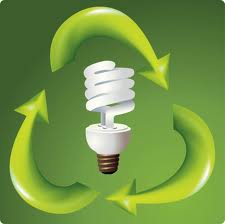Where your home’s energy dollars go?

- 45% heating & cooling
- 34% lighting, cooking & other appliances
- 13% water heating
- 8% refrigeration
Source: U.S. Department of Energy
Air Conditioning:
- For every degree you raise your thermostat setting above 72°F, you will save about 5‐7% on cooling costs. Set the thermostat at 78°F during the summer months. Ceiling and room fans can help move cooled air inside the home and increase comfort levels.
- Cooking, bathing, laundering and dishwashing produce heat and humidity, making your air conditioner work harder.
- Use kitchen/stove and bathroom exhaust fans to remove heat and moisture.
- In summer, close window coverings during the day. When selecting window treatments, consider thermal‐lined draperies or shades, keeping the heat out and the cool air in during summer.
- Evaluate the un‐cooled areas of your home, such as the attic, garage and unfinished basements. Keep these areas closed, weather‐stripped and properly insulated to reduce energy waste.
Lighting:
- Use compact fluorescent bulbs; they use up to 75% less energy and last 10 times longer than regular bulbs.
- Turn off interior & exterior lights when not in use. Use photo electric cells or timers on indoor & outdoor safety lighting.
- Install and use dimmers, increasing bulb life and saving energy.
Water:
- Lower water temperatures from 140°F to 120°F on your water heater.
- When going on vacation, lower the temperature on your water heater. Many newer water heaters have vacation settings.
- Take showers instead of baths; showers on average use 50% less water.
- Install energy efficient showerheads – one 10‐minute shower per day with an energy efficient showerhead can save 10,000 gallons of water a year.
- Install faucet aerators/flow restrictors in kitchens and baths; these can save 4,000 gallons of water a year.
- Limit running hot water when washing hands, brushing teeth, shaving or hand‐washing dishes.
- Run the dishwasher and clothes washer when full, using the energy‐saving cycle whenever possible. Use the air dry option on the dishwasher.
- Consider using cold or warm settings on your clothes washer, and always rinse with cold water.
Information source: www.bge.com
